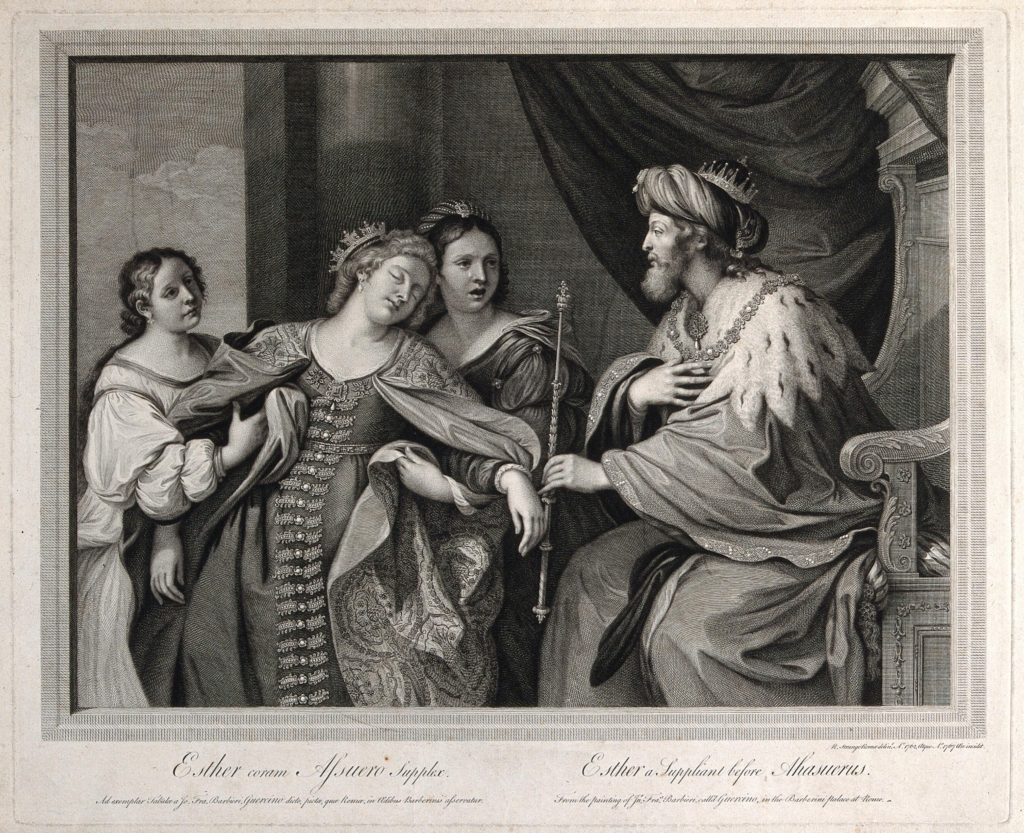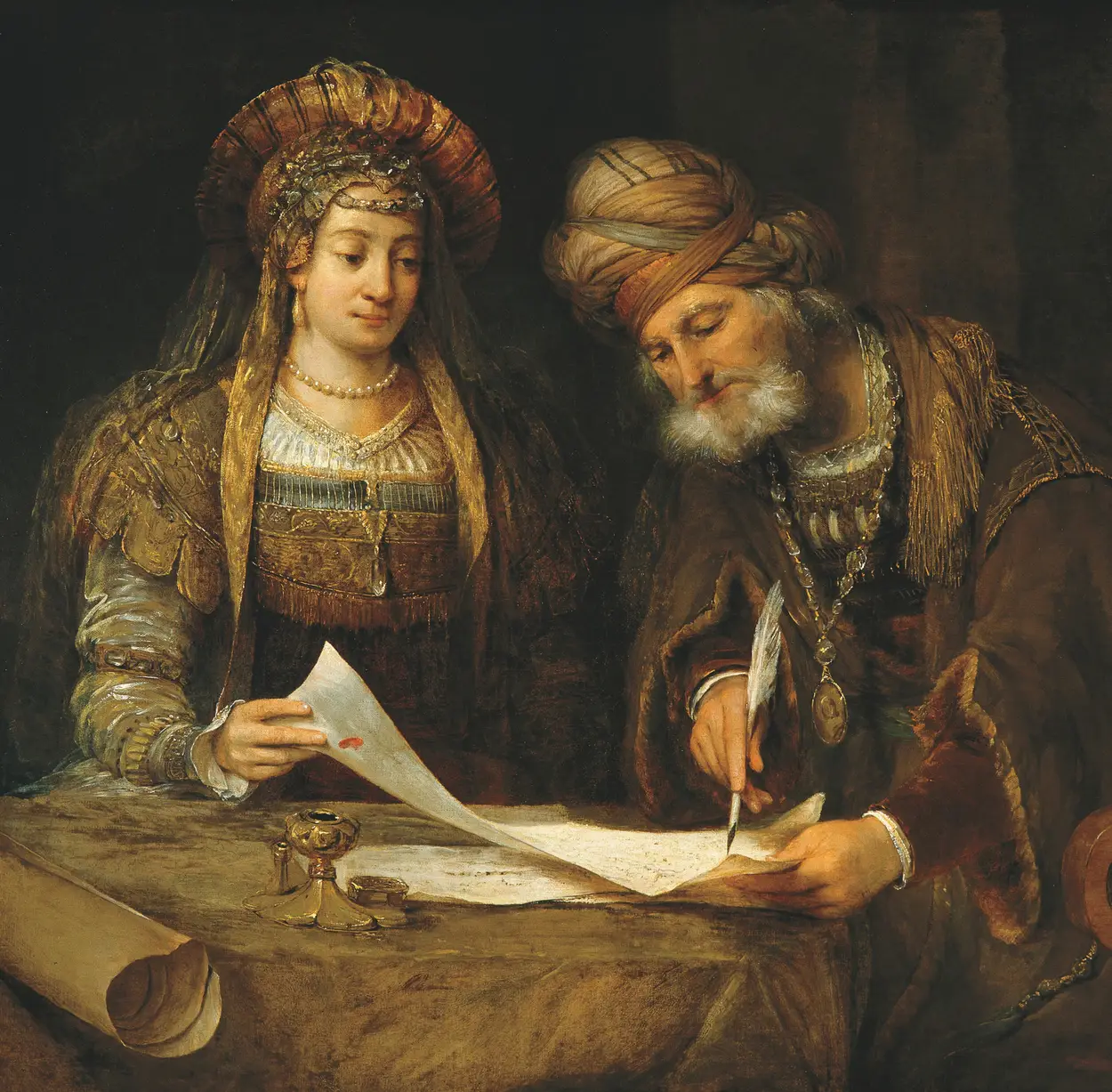Such a Time As This

St. Esther is one of only two female saints whom the Lutheran Church commemorates who also have books of the Bible named after them. In fact, Esther and Ruth are the only two females who have books of the Bible named after them.
Celebrated on May 24th, St. Esther has a story that surely stands out in the minds of many in the Church. The book named after her not only tells of Esther’s heroic courage but also relates in great detail the dramatic narrative of a Middle Eastern king’s inner circle, the richness and lavishness of the Persian court, and ways in which Esther would change the trajectory of history for the Jews.
An orphan and a descendent of King Saul, Esther was a young Jewish woman living in the Persian Empire. She became a particularly important figure when, sometime in the 470s BC, she was picked to become a Persian queen after King Ahasuerus got rid of his previous wife, Vashti, due to her disobedience. The Bible tells us that Esther was selected in part because of her beauty. Following the start of her new royal life, Esther’s relative Mordecai (who raised her and who also worked in the palace) heard of a plot to kill the king.

Mordecai leaks the plot, and after he saves the king’s life, he becomes a chief minister within the palace. However, another high official, Haman quickly becomes upset with Mordecai’s addition to the inner court after he refuses to bow down before him. In great anger, Haman creates a detailed plan meant to get rid of not only Mordecai but all of the Jews from the kingdom, going so far as to construct a large set of gallows on which he planned to hang them. Of course, it is not known to Haman or others in the palace that the king’s beloved Esther was also a part of the Jewish people.
Mordecai urges Esther to plead to the king for her life and the lives of her fellow Jews. He tells her the famous words, “Who knows whether you have not come to the kingdom for such a time as this?” (Esther 4:14) After a series of days spent in prayer and fasting, Esther approaches the king and is surprisingly welcomed by him when he extends his scepter to her. After some twists and turns, Esther finally gets the courage to tell him of Haman’s plan and its implications for her. The king is gracious to his wife, and Haman is hung on the very gallows that he himself had constructed for Mordecai and the Jews.

Brief History
Although the book of Esther largely ends here, it is assumed by many that Esther went on to live with her husband, the king, for the remaining years of his rule (likely before they were both assassinated in a revolution). The exact date of her death is not known, so May 24th has been posthumously assigned to her commemoration in the liturgical calendar. Jewish tradition does indicate with some certainty that Queen Esther’s tomb would still be located in Hamadan, also known as Ecbatana, located in what is now western Iran.
Unfortunately not much else is known about Esther and her background. However, as she is credited with saving the Jewish people from annihilation, her story and likeness have still been heavily celebrated throughout the history of Judaism and Christiantiy. Today, her story is still remembered by the Jews in their celebration of the holiday of Purim, which also takes place in the spring.
Displaying faith, humility, and patience, Esther and her story are both reminders of many of the godly traits that we might try to embody and serve to remind all of her character as a gentle ruler and brave child of God who put her life on the line in order to protect others.
Collect
God, Hear us, O God, our Savior, so that we, who rejoice in the feast of Blessed Esther, may learn from her the spirit of loving devotion; through Jesus Christ, Thy Son, our Lord, who liveth and reigneth with Thee and the Holy Ghost: ever one God, world without end. Amen.
Lessons
Epistle
Gospel
Resources
Issues, Etc. interview with the Rev. Dr. Ken Schurb on St. Esther
Issues, Etc. interview with the Rev. Dr. Kevin Golden on St. Esther
Propers found in Daily Divine Service Book: A Lutheran Daily Missal, edited by the Rev. Heath Curtis
References:
1. Weedon, William. Celebrating the Saints. Concordia Publishing House. 2016.
Images:
1. Esther faints before King Ahasuerus, Guercino, Italy, 1767.
2. Esther and Mordecai Writing the First Purim Letter, Aert de Gelder, the Netherlands, c.1685.
3. Esther Denouncing Haman, Ernest Normand, England, 1888.
Some links might be affiliate links which means we may receive a small commission at no extra cost to you. As an Amazon Associate we earn from qualifying purchases.




Leave a Reply